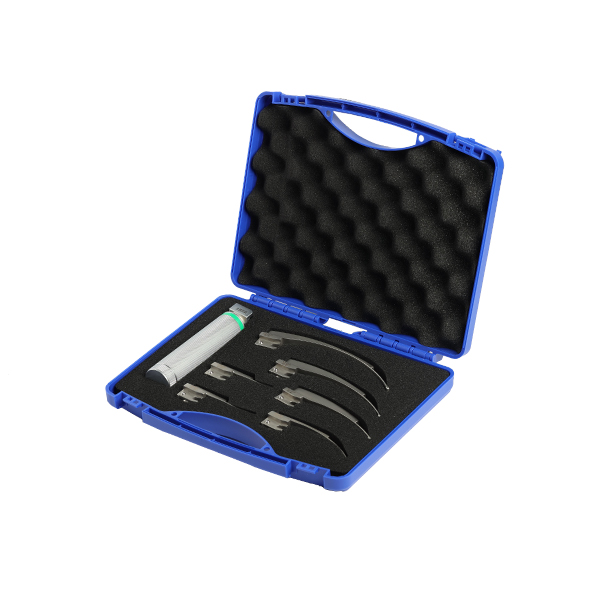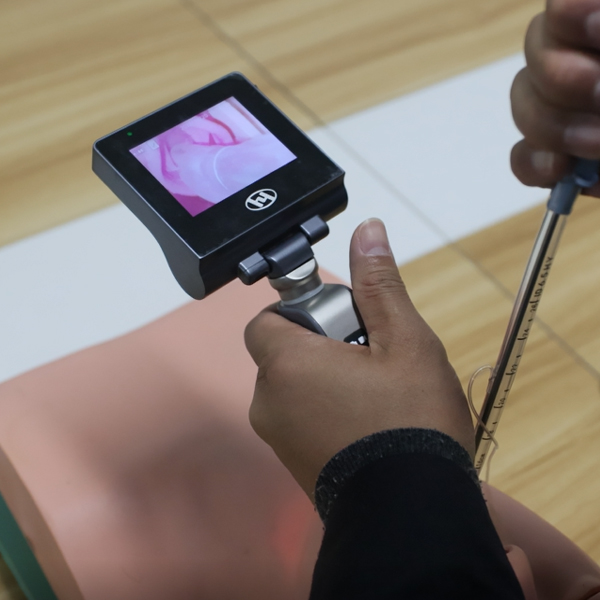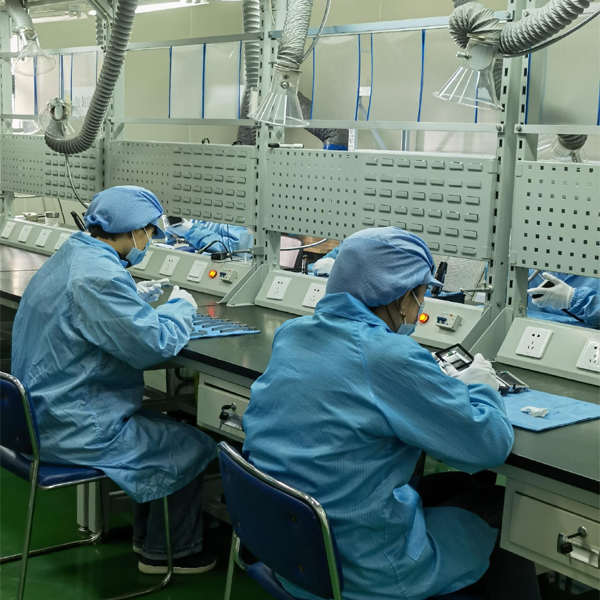The anesthesia laryngoscope is a pivotal instrument in the medical field, extensively employed in anesthesiology, dentistry and otolaryngology. Its unique design and features enable physicians to visualize anatomical structures with precision for accurate diagnosis and treatment. This article will explore the definition of an anesthesia laryngoscope, its mechanism of action, application areas as well as its significance in ensuring surgical safety and optimal outcomes.
An anesthesia video laryngoscope is a medical device that usually consists of a lens, a light source and a connector. It is designed to be inserted into the patient’s mouth or larynx to visualize laryngeal anatomy such as the vocal cords, the recurrent laryngeal nerve and the trachea. The illumination of the light source enables the physician to clearly see these areas and perform the necessary operations or treatments.

Anesthesia laryngoscopes use fiber optic technology, which usually consists of a flexible lens and a connector that is connected to an illuminated light source.
When using an anesthesia laryngoscope, the physician inserts it into the patient’s mouth or throat and adjusts the field of view by rotating and moving the lens. The light source illuminates the laryngeal area and is used to make accurate diagnoses and decisions.

Anesthesia laryngoscopes have a wide range of applications in the medical field. The following are a few common anesthesia video laryngoscopes uses:
Anesthesiology: Anesthesia laryngoscopes can be used to guide and monitor tracheal intubation, helping physicians to accurately position and operate the tube, improving the success rate and safety of intubation.
Dentistry: Anesthesia laryngoscopes play a key role in oral examinations and procedures. It provides a clear view to help doctors observe the tissues and lesions inside the mouth and perform precise treatment.
ENT: Anesthesia laryngoscope is widely used in ENT surgeries, such as vocal cord polyp removal, vocal cord anesthesia and vocal cord surgery. It can help doctors observe the anatomical structure of the vocal cords, accurately locate and operate, and improve the success rate of surgery.
Improve surgical safety: Anesthesia laryngoscope can provide a clear view to help surgeons accurately locate anatomical structures and avoid accidental injury to surrounding tissues. It also provides real-time observation, ensuring immediate adjustments and monitoring during the procedure.
Enhanced patient experience: The anesthesia laryngoscope reduces discomfort and pain during surgery compared to traditional surgical methods. It is very light to insert, and patients recover quickly with fewer postoperative adverse effects.

Conclusion: The anesthesia laryngoscope serves as a key tool for physicians to visualize anatomy in the fields of anesthesiology, dentistry, and otolaryngology. By improving surgical safety and outcomes, anesthesia laryngoscopy plays an integral role in modern medicine. As technology advances, anesthesia laryngoscopy will continue to evolve and play a greater role in medical practice, leading to better patient outcomes and experiences.